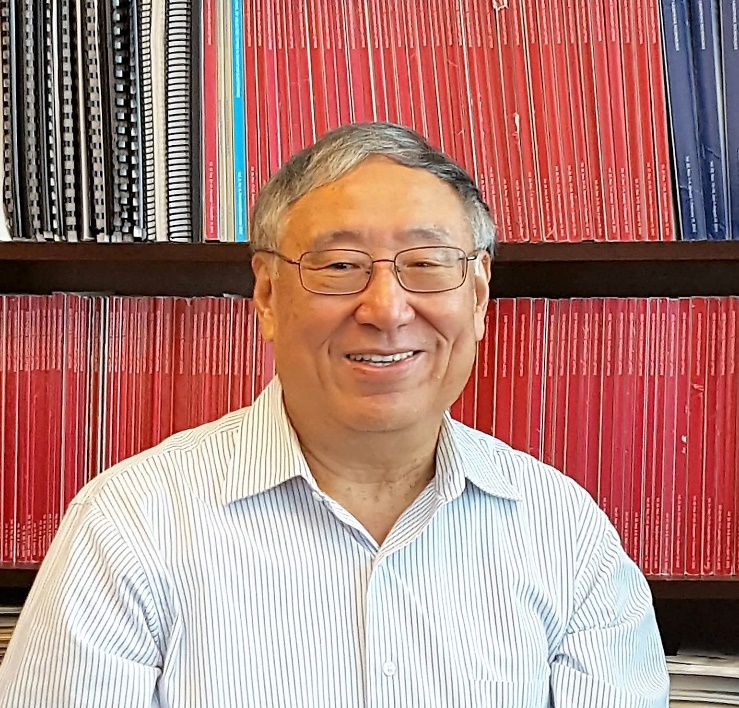Keynote
Abstract
5G mobile data communications deliver future information services spanning across enhanced mobile broadband services with massive connections, supporting ultra-reliable and low latency human and machine-type communications. 5G goes far beyond the definition of new radio access network with flexible function interfaces and expanded aggregation of multiple high- and low-frequency bands. 5G is about a new end-to-end network vision where integrated microwave photonics network elements and agile system function-slit usher in an integrated fiber-wireless access network infrastructure This flexible network support very diverse applications including broadband media distribution, Smart Cities, Internet of Things, and virtual and augmented reality. I will present an overview of the emerging standards and the ecosystems that are urgently driving the development of 5G wireless technologies and research topics that create opportunities for integrated microwave photonics devices and fiber-wireless optical access networks. I will discuss on the key roles that optics can play in the 5G vision, covering topics such as mobile X-backhaul, radio-over-fiber, advanced waveforms, and distributed cloud connect with smart edge nodes which are essential to deliver ultra-reliable low-latency services.
An all spectrum wireless communication network will be presented through seamless communications across all radio access technologies. All spectrum optical wireless module must be able to make massive network connections, by allocating channel frequency, switching MIMO to phased array antennas, and incorporate visible, infrared light and mm-wave communication channels. This all-inclusive network will have to meet technology challenges in three specific sectors: 1) spectral efficiency, 2) smooth migration path from low RF to millimeter wave and lightwave communications in heterogeneous network infrastructure. 3) Energy and form factor efficient modules that perform optical-millimeter wave generation, detection, coding and data recovery with hundreds gigabit/s transmission capability. It will pave the way for future network infrastructure to evolve to a semi-autonomous, adaptive, secure cyber physical communication platform.Short biography
Prof. Gee-Kung Chang is currently the Georgia Research Alliance and Byers Eminent Scholar Chair Professor of School of Electrical and Computer Engineering, Georgia Institute of Technology. He currently serve as the Director of NSF sponsored Industry/University Cooperative Research Center of Fiber Wireless Integration and Networking for 5G heterogeneous mobile data communications. Prof. Chang received a BS degree in Physics from National Tsing Hua University in Taiwan and a Ph.D. degree in Physics from the University of California, Riverside. He has served a total of 23 years in various R&D and managerial positions at Bell Labs, Bellcore, and Telcordia Technologies, including Director of the Optical System Integration and Network Interoperability, and Director and Chief Scientist of Optical Internet Research. Prior to joining Georgia Tech, he served as Vice President and Chief Technology Officier of OpNext, Inc., where he was in charge of technology planning and product strategy for high-speed optical networking components and systems. He has been granted more than 50 patents and co-authored more than 500 peer-reviewed journals and conference papers in a wide range of areas such as optoelectronic devices, telecommunication systems, WDM optical transport systems, optical access networks, optical network security, optical label switching and optical interconnect technologies, WDM-PONs, radio-over-fiber technologies and fiber-wireless convergence for next generation WiFi and 5G mobile data networks.
He is a fellow of the IEEE Photonics Society, a fellow of the Optical Society of America, and he was elected to Fellow of Bellcore/Telcordia Technologies in 1999, and a Fellow of Photonics Society of Chinese-America in 2000.
He leads an effort to organize a Special 5G Symposium for OFC 2017 on “What drives 5G and how can optics help”. He has served as the lead guest editor for five special issues of the Journal of Lightwave Technology and the Journal of Optical Communications and Networking. He was invited numerous times to deliver keynote messages to champion the convergence of optical and wireless access networks for providing next generation Internet services as keynote or plenary speakers at international communications conferences sponsored by IEEE Communications Society, Photonics Society, Optical Society of America, and SPIE.張繼昆教授目前是喬治亞理工學院電機工程學系的傑出講座教授(Georgia Research Alliance and Byers Eminent Scholar Chair)。亦是喬治亞理工學院美國國家科學基金會(NSF)所贊助的工業/大學光學無線應用合作研究中心的主任。他還擔任喬治亞理工光纖網路中心和喬治亞理工學院寬頻研究所的聯合主任。
張教授在國立清華大學獲得物理學學士學位, 並於加州大學河濱分校獲得博士學位。他曾在貝爾實驗室 (Bell Labs), 貝爾資訊研究所 (Bellcore)和Telcordia科技公司擔任過23年的研發和管理職位,包括光纖系統整合和網路互動性組組長,光纖網路研究總監和首席科學家。在加入喬治亞理工學院之前,他曾擔任OpNext公司的副總裁兼首席科技顧問,負責高速光纖網路系統的技術規劃和產品策略。迄今已獲得了超過50項專利,並共同發表了超過500篇期刊和會議論文,研究的領域非常廣泛,如光電子元件,電信元件和系統,WDM光纖網路系統和網路,光纖網路資訊安全,光標籤交換技術和光互連技術,TDM和WDM-PON,光纖無線技術和下一代WiFi和5G移動數據網路的光纖無線融合。
張教授是IEEE光子學會與美國光學學會的會士,也是貝爾通訊研究所/Telcordia科技所士和中美光子學會會士。他積極參與許多IEEE和美國光學學會的期刊、會議和科技計畫委員會。亦曾擔任光波技術期刊(JLT)和光通信與網路期刊(JOCN)五個特刊的首席客座編輯。他多次被邀請在各項國際會議中擔任特邀演講者,如IEEE通訊協會、光子學會、美國光學學會、國際光電工程學會, 是利用寬頻無線光纖技術提供網路用戶高頻寬,高容量之行動網路的先驅領導者。
